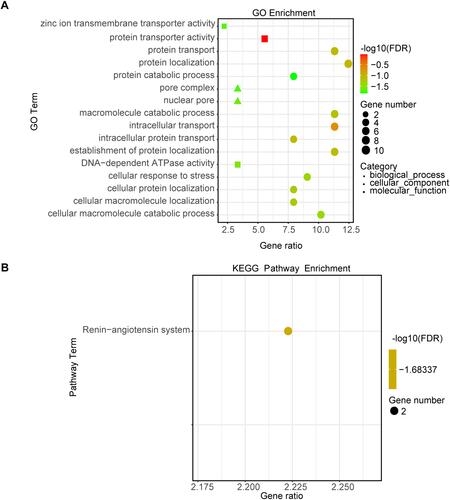Figures & data
Figure 1 Analysis of differential expression, disease progression and diagnostic implications of ARRDC3 in ovarian cancer. (A and B) Differential expression and disease progression of ARRDC3 in ovarian cancer, respectively; (C and D) validation of differential expression of ARRDC3 in GEO and ONCOMINE databases, respectively; (E and F) diagnostic implications of ARRDC3 in GEO and ONCOMINE databases, respectively.
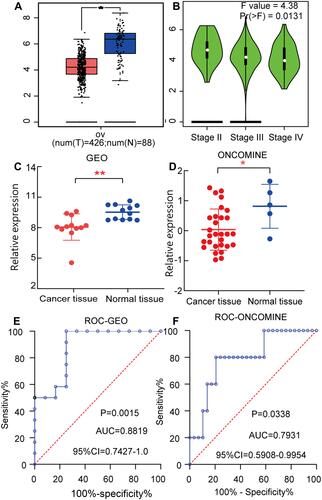
Figure 2 Survival analysis of ARRDC3 in ovarian cancer by OS, PFS, PPS as well as stratified analysis by serous carcinoma and endometrioid carcinoma types. (A–C) Survival analysis of ARRDC3 in ovarian cancer by as well as stratified analysis by serous carcinoma and endometrioid carcinoma types, respectively; (D–F) survival analysis of ARRDC3 in ovarian cancer by PFS well as stratified analysis by serous carcinoma and endometrioid carcinoma types, respectively; (G and H) survival analysis of ARRDC3 in ovarian cancer by PPS well as stratified analysis by serous carcinoma type, respectively.
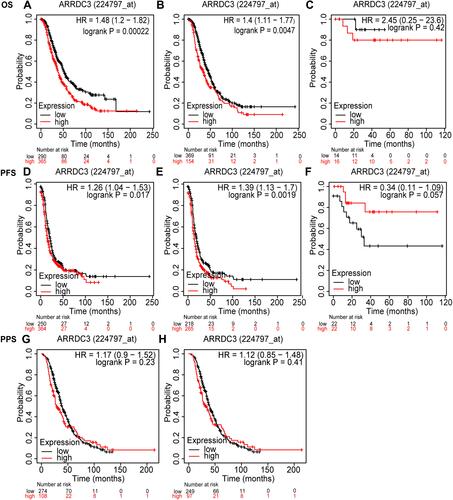
Figure 3 Stratified survival analysis of ARRDC3 in ovarian cancer by clinical stage of OS, PFS, PPS. (A and B) Stratified survival analysis of ARRDC3 in ovarian cancer of early stage and late stage of OS, respectively; (C and D) stratified survival analysis of ARRDC3 in ovarian cancer of early stage and late stage of PFS, respectively; (E and F) stratified survival analysis of ARRDC3 in ovarian cancer of early stage and late stage of PPS, respectively.
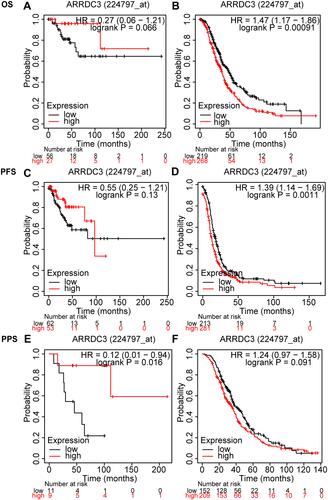
Figure 4 Stratified survival analysis of ARRDC3 in ovarian cancer by pathological grade of OS, PFS, PPS. (A and B) Stratified survival analysis of ARRDC3 in ovarian cancer of low grade and high grade of OS, respectively; (C and D) stratified survival analysis of ARRDC3 in ovarian cancer of low grade and high grade of PFS, respectively; (E and F) stratified survival analysis of ARRDC3 in ovarian cancer of low grade and high grade of PPS, respectively.
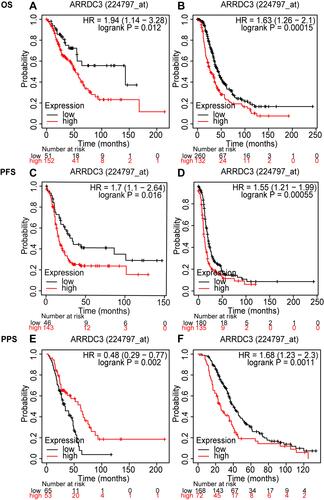
Figure 5 Stratified survival analysis of ARRDC3 in ovarian cancer by TP53 mutation of OS, PFS, PPS. (A and B) Stratified survival analysis of ARRDC3 in ovarian cancer of mutation type and wild type of OS, respectively; (C and D) stratified survival analysis of ARRDC3 in ovarian cancer of mutation type and wild type of PFS, respectively; (E and F) stratified survival analysis of ARRDC3 in ovarian cancer of mutation type and wild type of PPS, respectively.
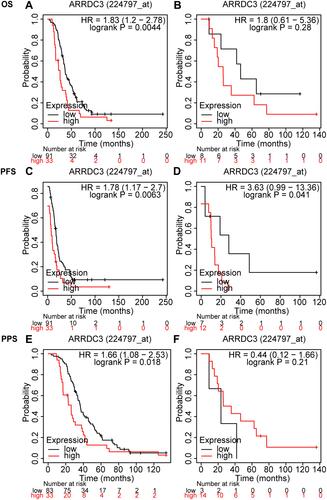
Figure 6 Stratified survival analysis of ARRDC3 in ovarian cancer by debulking degree of OS, PFS, PPS. (A and B) Stratified survival analysis of ARRDC3 in ovarian cancer of optimal and suboptimal of OS, respectively; (C and D) stratified survival analysis of ARRDC3 in ovarian cancer of optimal and suboptimal of PFS, respectively; (E and F) stratified survival analysis of ARRDC3 in ovarian cancer of optimal and suboptimal of PPS, respectively.
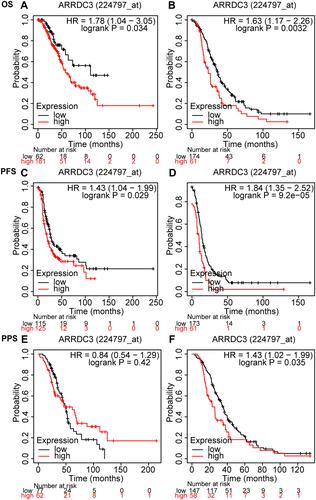
Figure 7 The mutation, immune and interaction network of ARRDC3 in ovarian cancer. (A) Genetic alterations, including missense mutation and deep deletion of ARRDC3 in ovarian cancer; (B) The correlation analysis between ARRDC3 expression and infiltrate level of diverse immune cell types in ovarian cancer; (C) The gene–gene interaction network of ARRDC3 with other related genes in physical interaction, co-expression, pathway and shared protein domains aspects; (D) The protein–protein interaction network of ARRDC3 with other proteins with PPI/TPM>1000, interologs, TPM≤10, TPM≤1000, and interologs genetic/TPM≤1.
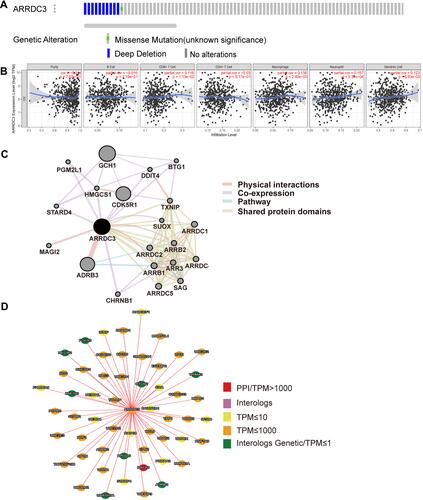
Figure 8 Enrichment analysis of the ARRDC3 and its co-expression related genes in cBioPortal database. (A) Enrichment analysis of gene ontology terms predicted by ARRDC3 and its co-expression related genes, including biological processes, cellular components and molecular functions; (B) Enrichment analysis of KEGG pathway predicted by ARRDC3 and its co-expression related genes.
